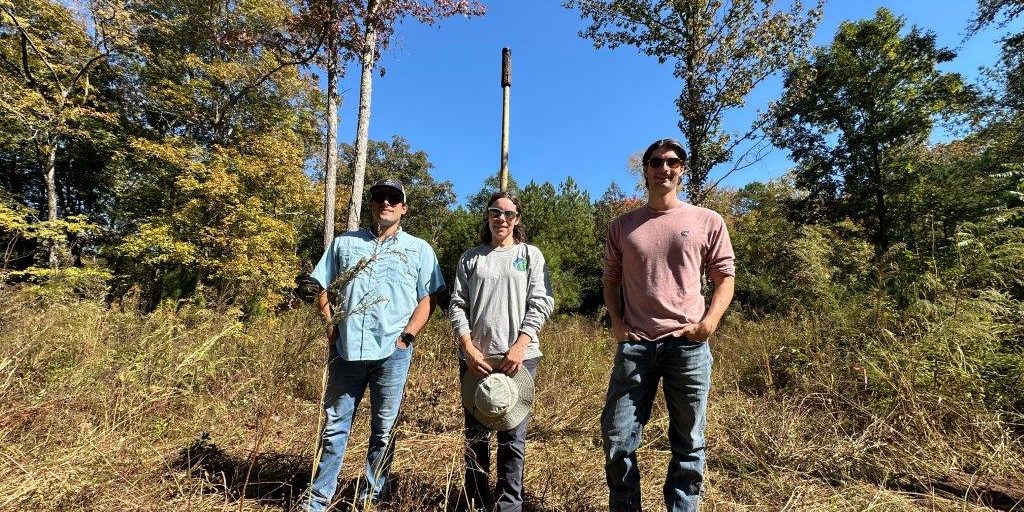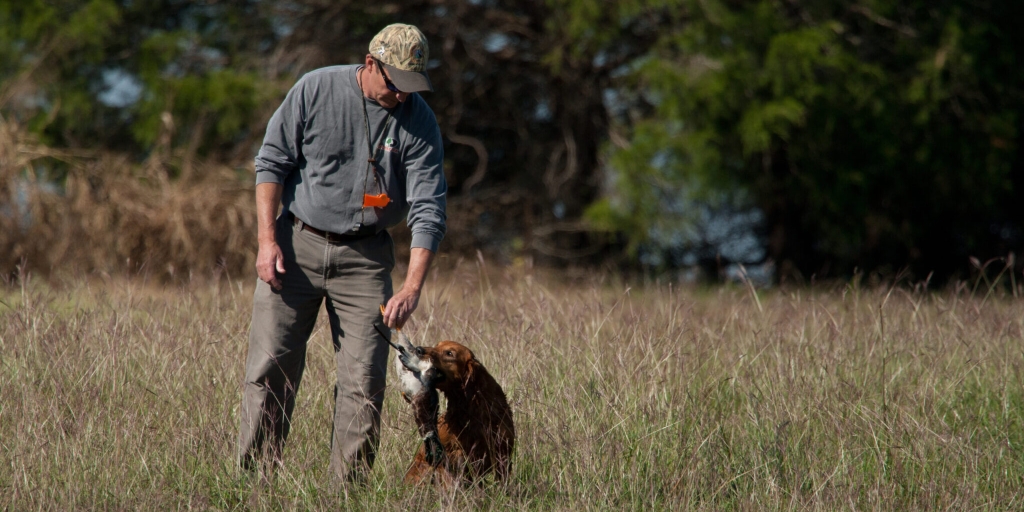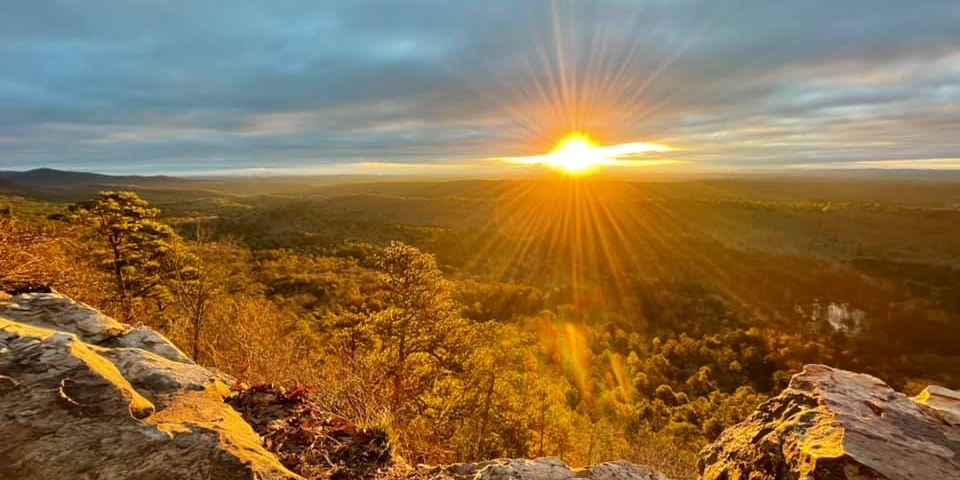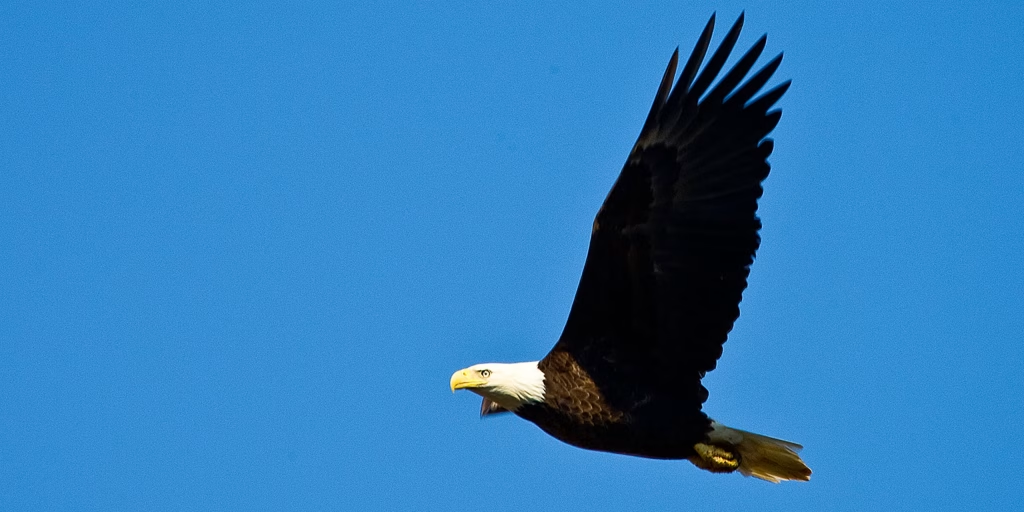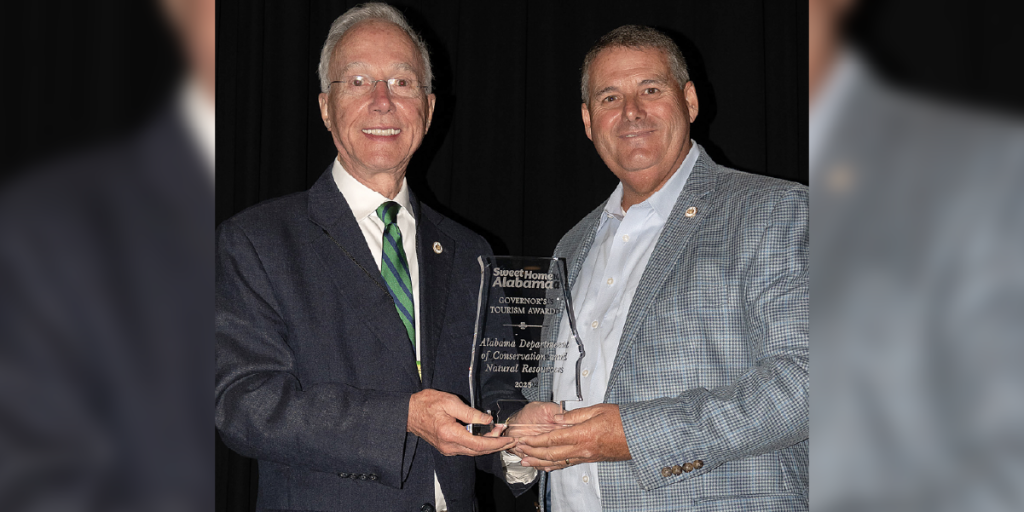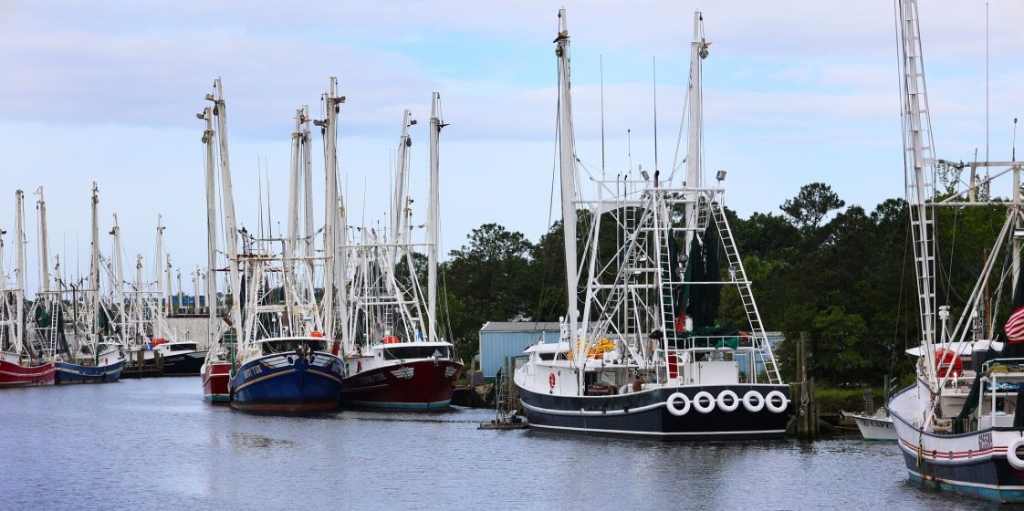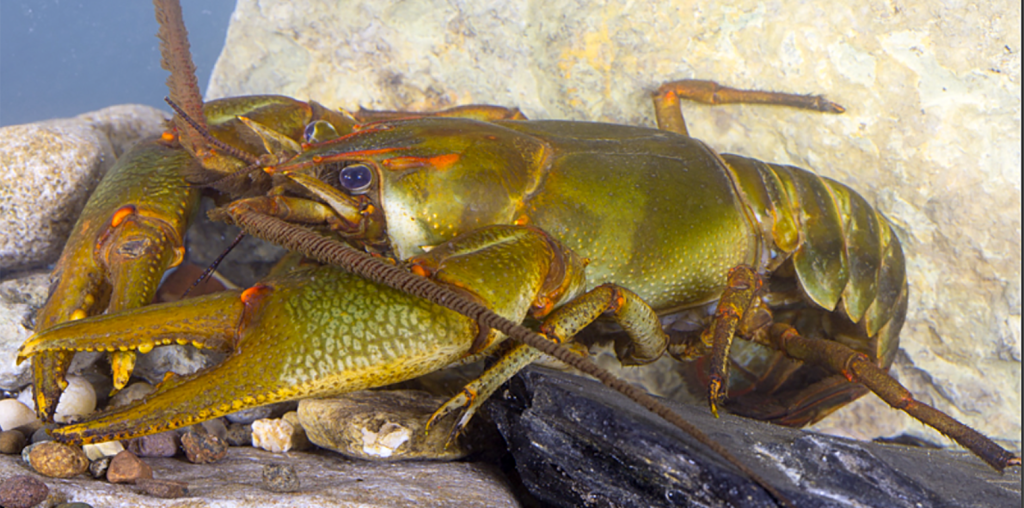The Weaver Cave Preserve in Anniston now boasts seven new artificial bat roosts, courtesy of a partnership between the Georgia-Alabama Land Trust and Alabama Power and funded by the U.S. Fish and Wildlife Services Partners Program and a grant from the Alabama Power Foundation.
On Wednesday, representatives from both organizations rolled up their sleeves and mounted the seven habitats, each resting at the top of poles. Three of the roosts were constructed out of BrandenBark material — an artificial tree bark designed specifically for tree-roosting bats — and the remaining four were bat boxes.
“I had this idea to install a bat house exhibit with all sorts of different models of bat houses hopefully attracting different types of bats,” said Lesley Hanson, who serves as the Georgia-Alabama Land Trust’s director of monitoring and site documentation. “Later, there will be some signage explaining the different types of bats — colonial versus solitary and what types of bats typically use bat houses. We’re trying to create a habitat for the bats, but secondarily it’s for educational opportunities for the public and just kind of enrichment in general.”
The Weaver Cave complex is home to at least six bat species, with several of the species being federally protected. Along with the eastern red bat, Seminole bat and big brown bat, the three species of conservation concern include the gray bat, the Indiana bat and the tricolored bat. Around 12,000 gray bats inhabit the complex during the spring and summer months. During the winter, roughly 600 tricolored bats and, as of last year, 13 Indiana bats make Weaver Cave their home.
The complex consists of both Weaver Cave and Lady Cave, both of which share a rich history. Lady Cave was mined during the Civil War for saltpeter, which is used to create gunpowder. Weaver Cave’s history revolves more around recreation, including a restaurant and dance hall that operated in the 1940s called The Bow and Arrow.

Nowadays, bats are the frequent patrons of the cave complex. However, in recent years, white nose syndrome has contributed to a plummeting bat population in Alabama and across the continent. With the disease having disastrous effects on a number of species, it is now more important than ever for bats to be studied.
“Alabama Power has been involved in bat conservation, research and habitat preservation activities for about a decade now,” said Dylan Shaw, a biologist with Alabama Power Environmental Affairs. “Understanding the biology of bats and the threats they face allow us to better ensure Alabama Power’s operations are protective of bats and their habitat. We’re hoping that starting projects like this one can help us understand more about our local populations of bats. Some of these species have ranges that cover over half the country, but our local populations might behave differently than ones that live in the northeast where it gets much colder in the winter. The more opportunities to have projects like this, the more that partners on the ground can get an idea of what’s going on with the bats in our area.”

Worldwide, more than 300 species of fruit depend on bats for pollination. Alabama’s bat species are insectivorous, meaning they eat insects. Some species can eat as many as 4,500 insects in a night. The new bat houses aim to give the bats a longer-lasting home than their typical roosts of decaying trees while also creating new avenues of research to help combat their reduced population.
Collaborations between organizations like the Georgia-Alabama Land Trust and companies like Alabama Power are crucial to helping protect species like the bats at Weaver Cave. Along with funding from the U.S. Fish and Wildlife Partners program, the project was also funded with a grant provided by the Alabama Power Foundation.
“The Alabama Power Foundation is very intentional in our support of projects to preserve and conserve Alabama’s natural resources,” said Staci Brown Brooks, president of the Alabama Power Foundation. “We know the proactive protection and enhancement of habitats ensures Alabama remains one of the most biodiverse states now and for future generations. We’re excited to see the environmental and educational benefits this project will have.”
The Weaver Cave Preserve was established in 2021 and soon afterwards opened to the public. The site includes trails and kiosks with information for visitors with the goal of educating the community on the area’s natural resources along with its bat population.
The same year that the preserve opened, gates were installed on the cave to preserve the protected bat population. While the caves are off-limits for most of the year, they are opened in October for visitors to come and see the bats in their natural habitat.
To learn more about the Weaver Cave Preserve and the Georgia-Alabama Land Trust, click here. If you would like to know more about Alabama Power’s environmental efforts, click here.
Courtesy of Alabama News Center.




